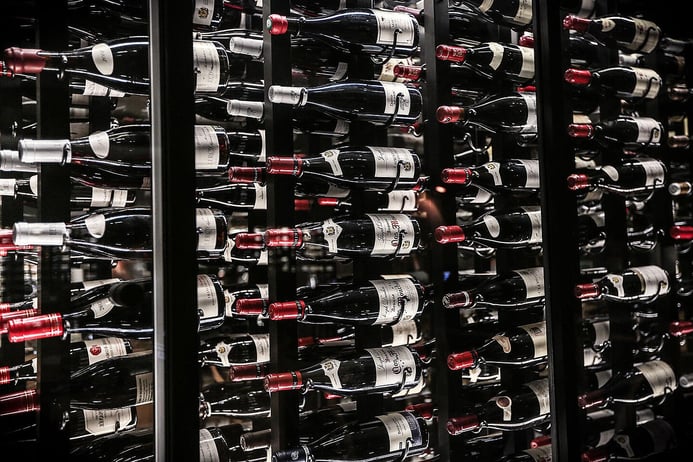Wine has become a status symbol in recent years and as wine consumption grows globally, more and more people are keen on learning more about the world of wine. At the same time, the wine industry is becoming increasingly homogenized in terms of its offerings, thanks in no small part to Robert Parker and his recommendations. We are now seeing a kind of ‘globalization’ (dare we say ‘Parkerization’?) of wine culture.
Training programs have emerged and some large entities such as the Wine and Spirit Education Trust have begun offering standardized tasting programs designed to be rolled out wherever demand surfaces. Codified and heavily-formatted tasting sheets have become the norm when it comes to learning about wine. The trend is clearly towards standardized learning methods and we are left wondering if there is any room for alternatives?
For now, programs run by English-speaking wine organizations like WSET have become pre-dominant globally, using tasting scorecards with words and adjectives that are suggested beforehand, often with boxes to tick. As these corporations tend to operate under a franchise model, industrial-scale learning requires shared teaching resources worldwide. [According to WSET, it is not run as a franchise model, but instead works with independent wine education providers who, once they become approved program providers, are able to offer its qualifications. It adds that they then run their businesses independently but do receive training from WSET certified educators].
For economic as well as pragmatic reasons, these entities must standardize their training programs and, by extension, their tasting cards. The problem does not lie with the entities themselves: they are helping to spread knowledge about wine to mass markets, while meeting the demand from these markets.
Rather the problem lies in the fact that standardized wine tasting effectively forces students to think the same way – at least at the beginning of their wine journey. And that is detrimental to wine.
So who are the major players in wine training?
UK-based WSET is the largest company of its kind in the world and currently enrolls 40,000 students each year worldwide. It offers students wine knowledge in its ‘basic programs’, sometimes in piecemeal fashion in a very short space of time. WSET has more training centers in China than in any other location in the world, except for the UK.
Another major player globally, especially in the US, is Master Sommelier.
On the whole, there is little competition globally and the companies offer wine classes to novices, as well as experts. As a result, more and more restaurants – particularly in Asia – are hiring sommeliers with qualifications from recognized entities like WSET.
Often, their goal is to train students quickly while emphasizing pragmatism. As mentioned earlier, tasting cards are heavily-codified analytic sheets. Students need to be able to discern quickly between low, below average, above average, and high levels of acidity. For students, it is an arduous process as they race to assimilate as much knowledge as they can as quickly as possible.
Standardization leads to a ‘Pavlovian’ way of learning, based on conditioning rather than thoughtful reflection. In the rush to format and limit the vocabulary, however, the wine tasting experience suffers.
We’ve already seen the influence of leading US wine critic Robert Parker on the industry; the danger would be to standardize wine ratings and, as a result, spawn a “universal good taste” as one of my colleagues – a finance professor – puts it. In a certain way, we are creating pre-formatted profiles of the senses, while stereotyping wines.
These major Anglophone entities are obviously not the only ones using analytical and highly-codified score cards.
In certain instances, this type of teaching approach may be necessary (for oenology programs, for example) but does everyone need to take the same approach? Doesn’t the use of standardized and codified cards effectively muzzle students’ range of expression? Does everyone really need to think alike or taste wines in an identical manner?
The manifest danger of wine-related courses in general – and this applies to large corporations as well as the small establishments that mimic their learning methods – is undoubtedly the way in which wine tastings are organized.
Upon simple inspection of the seemingly mathematical tasting cards, it’s readily apparent that the word ‘pleasure’ is not one of the boxes to be ticked. This all cruelly lacks emotion; expression is mainly based on strict linguistic discipline and behaviorist learning theory, whereby free will is an illusion and our behavior is determined by the environment.
The phenomenon of standardizing wine tasting internationally also prompts other questions related to the homogenization of wine instruction tools. Can we reasonably expect, given differences in culture, language and appreciation of wine, to lay the foundations of standardized content that can be used from Bangkok to Paris, without stripping wines of their diversity and uniqueness? Does it make sense to insist that a uniform set of tasting rules be used, while continuing to expect the evaluation to mean something?
Understanding and accepting cultural differences is crucial: how can we ask an Indian student who is used to eating spicy foods to analyze acidity in the same way as a European student whose palate has not been shaped in the same way.
In order to create a standardized document, all linguistic ambiguity must be eliminated, which – by definition – is a fool’s errand. If a Chinese student translates “dry”, what is left for him in the end?
There are far too many cultural and educational singularities to make standardization work. Each culture must be allowed, where possible, to create its own vocabulary based on its unique aspects. We should avoid – at all costs – applying a strict tasting framework across the board.
Can we offer an alternative to this type of learning method?
The short answer is, yes we probably can – even for students who are aiming to get into the wine business. The solution is not doing away with the analytical method or conventional tasting score card entirely but to set it aside initially, then perhaps use it in conjunction with other tools that offer greater freedom of expression.
Imposing universal standards should be banished; instead, ‘guidance’ should be the watchword while bearing in mind that ‘anything goes’ is not an option either. There are limits as to what can be expressed verbally and the emphasis should remain on the intrinsic qualities of the wine. This could be based on relatively simple methods such as a blank sheet of paper instead of a tasting score card, a method with which I am experimenting here in Lausanne.
In the first stages of learning, students must take the time to stop, analyze the wine, and in their own words provide their impressions, even if the assessments are sometimes rather simplistic. Trying to put the experience into their own words, rather than leaning on pre-formatted terminology, makes the experience more complex but brings them emotionally closer to the wine.
The all-important second stage is based on dialogue and diverging opinions are common. It is entirely possible to build shared concepts, while respecting differences of opinion and keeping the dialogue open.
We need to bring wine tasting back to its roots of providing pleasure and call upon emotions in the same way that the industry does via experiential marketing.
What is important is for students to start from their own experience, which means considering a more heuristic approach, allowing students to discover wine for themselves, as well as an aesthetic approach. Analogies should be used regularly: wine has never developed its own specific vocabulary, few words or phrases exist to describe it.
Instead, wine experts describe wine by using analogies to the body, fabric, etc. During tastings, professors provide information about wines, serving as an intermediary between the wine (the winemaker and the terroir) and the students.
Of course, the professors must use terms that the students will understand and, with that, there are linguistic limits in describing wine. The professors share their knowledge with students and allow them to enrich their vocabulary.
Lastly, the professors must also - and this is crucial - accept and admit that they do not know everything in order to leave room for discussion, even if it may at times turn out to be sacrilegious.
The intrinsic qualities of a particular wine are not confined to its acidity or sugar content alone, but should also include the pleasure it provides. If teaching is solely based on a mathematical analysis of wine, we would be depriving students of the pleasure that comes with the tasting experience and – more importantly – the freedom that entails.
The purpose of a wine tasting is not only to understand the wine itself, but to provide a forum for stimulating exchange between participants.
In conclusion, we can rejoice that more and more people around the world want to learn about wine. However, globalization should not be synonymous with uniformity. Wine, through tastings, should be a window to the unique aspects of people and cultures.
Clarifications and amplifications
In the original article published on 2 July 2018 we stated that WSET has more training centers in China than anywhere else in the world, including the UK. WSET says China is its second largest market after the UK, adding that there are approximately 175 WSET Approved Program Providers (accredited individuals, companies, colleges, universities, and independent training organizations) across China, compared to more than 250 in the UK. As for WSET candidates, there were 12,813 in mainland China last academic year compared to 19,401 in the UK.




